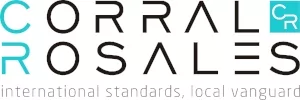Through Resolution No. OCDI-2019-06181, the Ecuadorian Intellectual Property Office confirmed that the design of CROCS footwear is capable of being recognized by consumers, and also allows consumers to differentiate it from the products of competitors, since it has its own special elements that give the product a different appearance, and is not common or ordinary.
With this decision, the distinctiveness of the three-dimensional design of CROCS footwear in Ecuador was upheld, and it is confirmed that only CROCS, INC. may market goods under such design, having the exclusive right to prevent third parties from using and marketing the same or similar goods.
In 2015, CROCS, INC. obtained the registration of the mark THREE-DIMENSIONAL DESIGN (3D BAYA SHOE DESIGN) to protect "footwear".
The three-dimensional mark has its own characteristics, which differentiate it from the traditional denominative, figurative and mixed mark, since with this specific type of marks, an object that occupies a volume in space is protected; that is, it is the shape of a product or its packaging. Therefore, the distinctiveness of this type of marks rests in the shape and relief as a whole, among other distinctive elements that are added into its configuration.
In 2017, JHON ALBERTO FIGUEROA VIVANCO applied to the Ecuadorian Intellectual Property Office for the nullity of the mentioned registration, claiming that it was a generic shape for footwear and therefore not for exclusive appropriation by one entity. Additionally, the claimant pointed out that the design granted a functional or technical advantage to the product, and so could not be protected as a trademark according to the law.
Article 135 of Decision 486 of the Andean Community establishes that the following signs cannot be registered as trademark:
“(…)
- those that lack distinctiveness;
- those that consist exclusively of usual forms of the products or their packaging, or of shapes or characteristics imposed by the nature or the function of the product or service in question;
- those that consist exclusively of a shape or other elements that give a functional or technical advantage to the product or service to which they apply; (...) "
During the proceedings, CROCS, INC. was able to show that the contested registration did meet the requirements to be considered a three-dimensional design, even filing evidence of registrations obtained over the same design in several other countries, in which, as in Ecuador, the distinctiveness of their unique designs had been recognized.
With regard to the functional advantage claimed by the plaintiff, the IP Office determined that the arbitrary elements of the design are not dictated by function, since the exclusion of such shapes, reliefs, crevices and holes does not prevent the natural use of the product.
Footnote
1 Proceeding No. 17-1679-RV-2S dated 18 July 2019.
The content of this article is intended to provide a general guide to the subject matter. Specialist advice should be sought about your specific circumstances.

